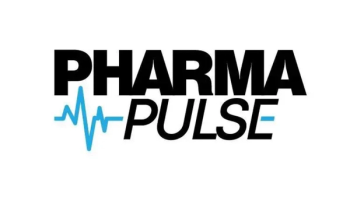The pharmaceutical industry stands at the threshold of a long-overdue transformation in how serialization is approached, implemented, and managed. For more than a decade, serialization has largely been driven by compliance, delivering solutions that meet regulatory requirements but offer limited value beyond the legal minimum. Today, however, the world of pharmaceutical serialization is poised for a strategic leap forward.
We call it Serialization 2.0, and it’s more than just a technical evolution. It’s a business imperative that yields significant competitive advantages.
The missed opportunity of the last decade
For a moment, let’s imagine a serialization environment fully aligned with the principles of Pharma 4.0, with built-in quality checks, real-time OEE monitoring, AI-assisted maintenance, and seamless data visibility across packaging sites and enterprise systems. Imagine validated configurations deployed in minutes instead of months.
That vision is not only possible—it’s necessary. Most serialization systems in place today are based on proprietary technologies. They are outdated, on unsupported operating system versions, and difficult to scale. While these systems still meet compliance obligations, they come at an increasingly steep operational and financial cost. Maintenance is complex. Upgrades are disruptive. Innovation is simply not occurring.
Serialization 2.0 addresses this directly, offering open, interoperable, and future-ready architectures. These systems are designed for long-term efficiency, enabling companies to respond faster to client demands, reducing total cost of ownership, and laying the groundwork for AI, predictive analytics, and smart packaging technologies. Serialization 2.0 will allow faster adoption of future compliance requirements as the regulatory landscape changes.
The question is no longer if modernization is needed, but rather, how soon can you begin?
Key Takeaways
- Serialization 2.0 is a strategic business imperative – Moving beyond regulatory compliance, modern serialization systems offer competitive advantages such as reduced costs, increased agility, and readiness for emerging technologies.
- Current systems are outdated and costly – Many existing serialization setups rely on aging, proprietary hardware and software, resulting in high maintenance costs, limited scalability, and barriers to innovation.
- Open, interoperable architectures are the future – Upgrading to modular, vendor-agnostic systems with smart automation tools and real-time data capabilities is essential for improving efficiency, enabling predictive maintenance, and preparing for Pharma 4.0.
The case for urgency
The numbers alone are compelling. An estimated 70,000 packaging lines have been serialized worldwide over the last decade; as of today, many are running on aging infrastructure, outdated software, and hardware at the end of its lifecycle. A significant number of operating systems are no longer supported. Servers are near capacity, and the associated databases can’t keep pace with new demands. And while global standards, (such as GS1 or OPC-UA) have made incremental progress, true interoperability remains elusive.
In many regions, including the United States, gaps in data communication standards and integration frameworks leave companies vulnerable to escalating costs and diminished agility. Vendors, meanwhile, continue to deliver proprietary solutions at every level—from cameras and line software to full-site platforms. This locks clients into ecosystems that are expensive to maintain, slow to evolve, and can’t be supported by modern IT management tools.
To break this cycle, the move to Serialization 2.0 starts with three decisive steps:
- Eliminate proprietary hardware, particularly vision systems that restrict upgrade paths.
- Standardize line controls by removing line automation from the serialization computer and leveraging proven automation tools.
- Deploy open site-level software that is capable of integrating with any line solution and enterprise platform.
Rethinking the tech stack: L1 to L3
A closer look at the serialization architecture from L1 (line devices) through L3 (site systems) reveals critical areas for reform.
L1: Smarter line devices
Line-level technologies have seen dramatic advances. Smart cameras, printers, and barcode readers now feature embedded intelligence and robust standard interfaces. The introduction of AI-driven monitoring, smart inks, and texture-based verification tools presents new opportunities for error reduction and quality assurance. Predictive maintenance, driven by real-time data, can dramatically reduce unplanned downtime.
Today, the majority of serialization implementations are still constrained by proprietary vision systems and nonstandard communication protocols. Moving forward, hardware investments should prioritize open, future-proofed systems with standardized interfaces to accommodate emerging technologies.
L2: Smarter line control
Most vendors continue to rely on computers to manage both automation and serialization tasks. This design is an artifact of their roots in vision systems, not a reflection of best practices in automation.
In reality, programmable logic controllers (PLCs) are purpose-built for line control. They’re more reliable, cost-effective, and easier to scale. Transitioning automation to PLCs—while keeping computers focused on computation-heavy serialization logic—unlocks major benefits.
In one multi-site deployment of over 30 lines, this architecture saved more than $5 million and cut downtime to less than two weeks per line. The message is clear: future-ready serialization starts with using the right tool for the job.
L3: Site-level systems must evolve
For years, site-level (L3) serialization software has served as a fallback if the enterprise (L4) solution goes offline. Unfortunately, vendors use these systems to enforce product lock-in, restricting the ability to integrate with alternate line-level solutions.
It’s time to demand more. Open, interoperable site systems enable seamless communication across all layers—from equipment and line control to enterprise reporting. They also reduce support costs, simplify scaling, and increase transparency across facilities.
Clients evaluating L3 solutions should prioritize modular platforms that support open data exchange and are vendor-agnostic by design. Procurement teams must demand interoperability commitments in contracts to avoid being locked into obsolete platforms.
The business benefits are clear
In our opinion, companies that embrace Serialization 2.0 will:
- Lower operational costs through simplified maintenance and standardized hardware.
- Increase agility in meeting client and regulatory demands
- Boost scalability and resilience by leveraging open architectures.
- Position themselves for new tech adoption as Pharma 4.0 accelerates.
Just as importantly, Serialization 2.0 enables better decision-making across the enterprise by unlocking data trapped in proprietary systems. With enhanced visibility and interoperability, companies can drive continuous improvement, optimize performance, and respond proactively to shifting regulations or supply chain demands.
A competitive imperative
Serialization 2.0 isn’t just an upgrade—it’s a strategic investment in future readiness. Those who delay risk being left behind in a marketplace that increasingly rewards adaptability, transparency, and operational excellence.
Pharmaceutical leaders must take a hard look at their current serialization infrastructure and ask a simple but urgent question: Are we building for compliance—or for competitiveness?
With open systems, smarter controls, and interoperable architectures, Serialization 2.0 offers a clear path forward. It’s time to seize the opportunity.
About the Authors
John F. Jordon, P.E., is chief customer officer, while Pavel Dimitrov is director of product management, both with advanco.






